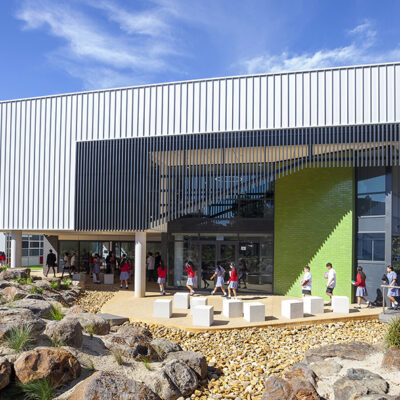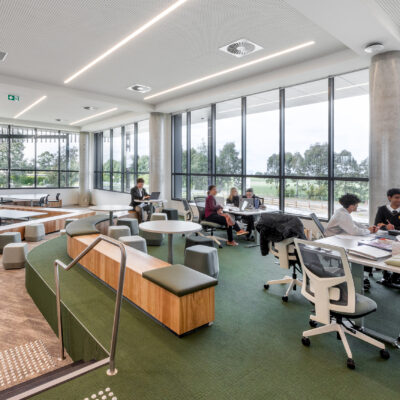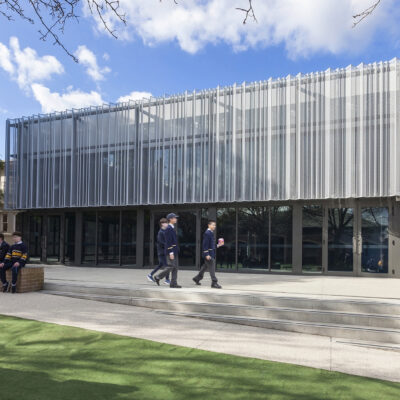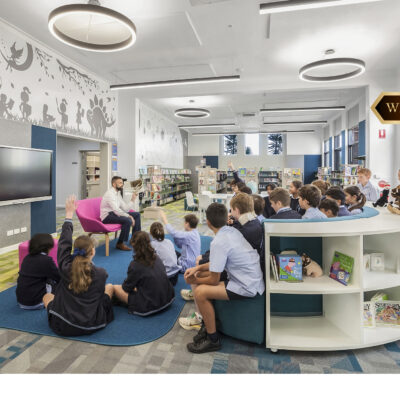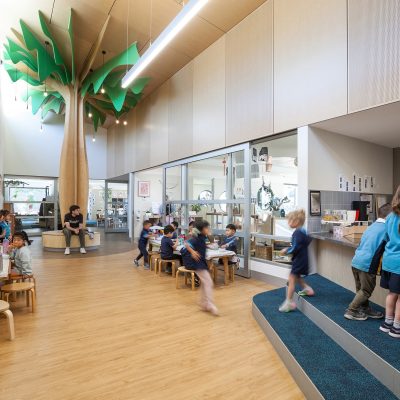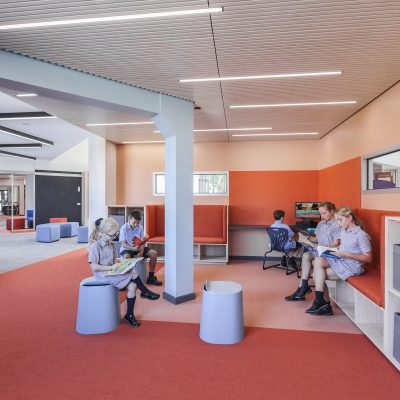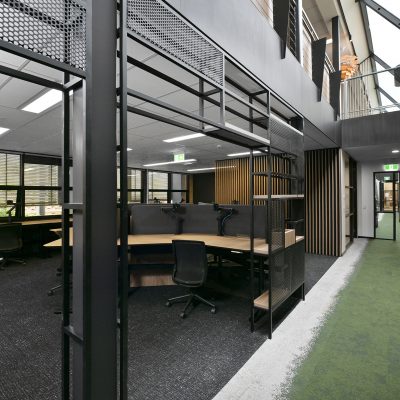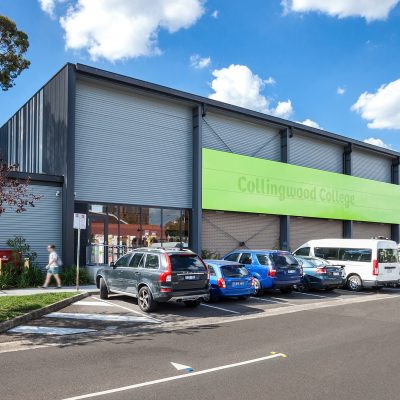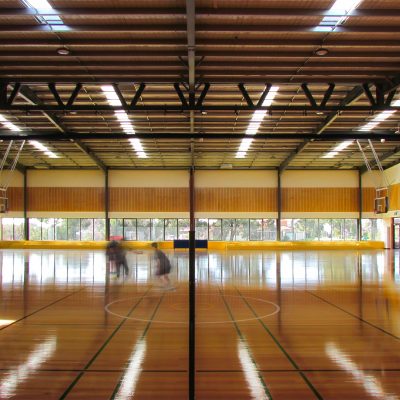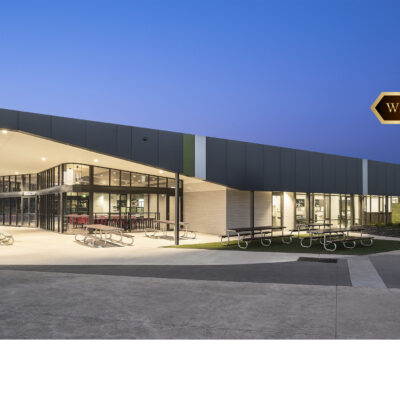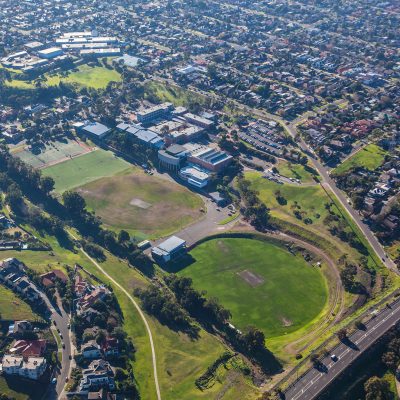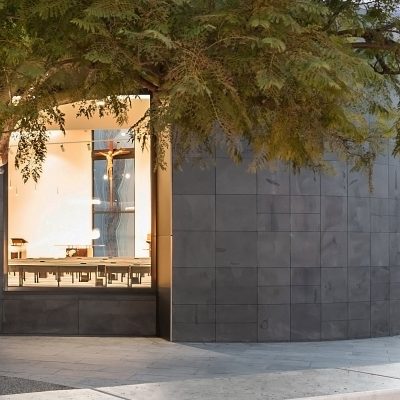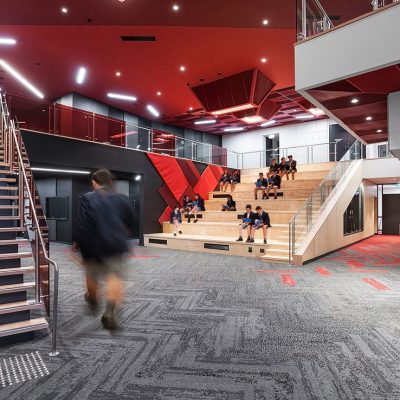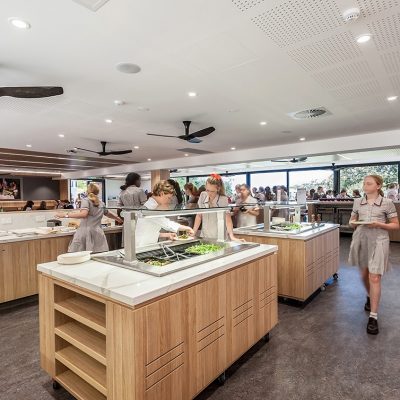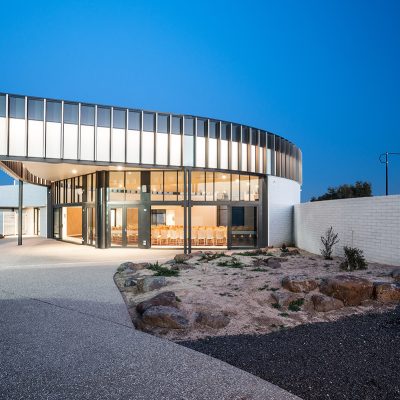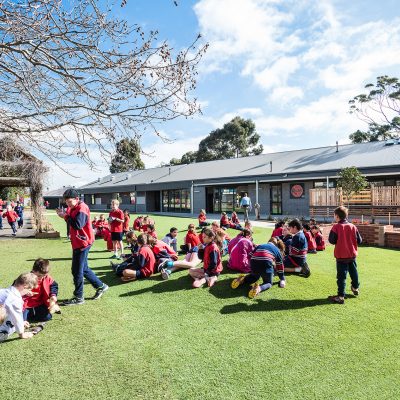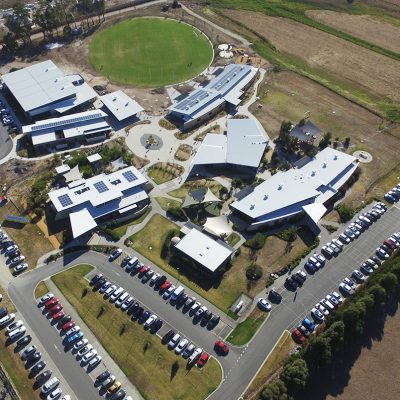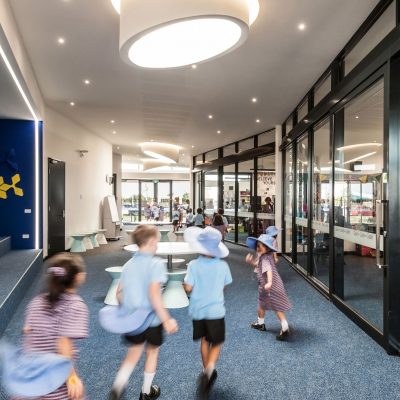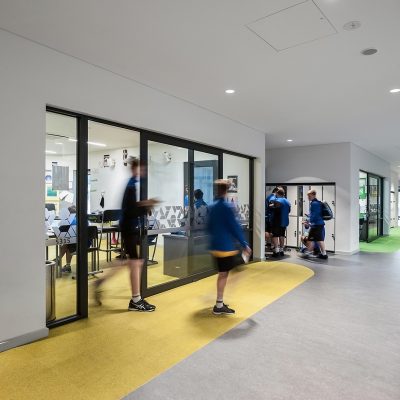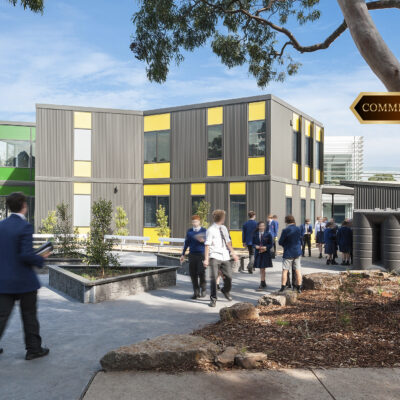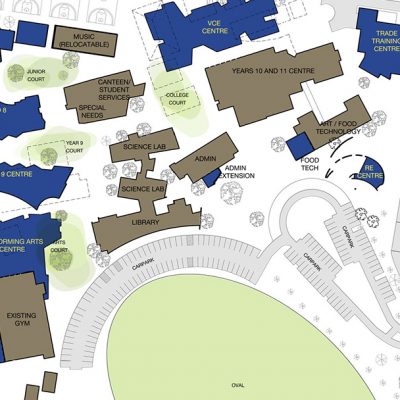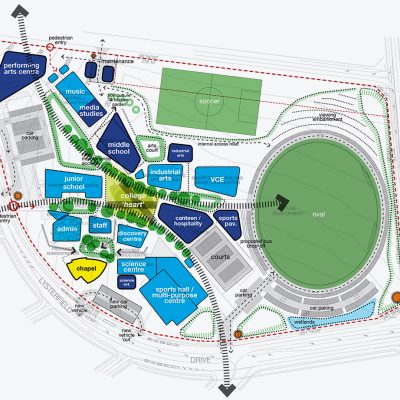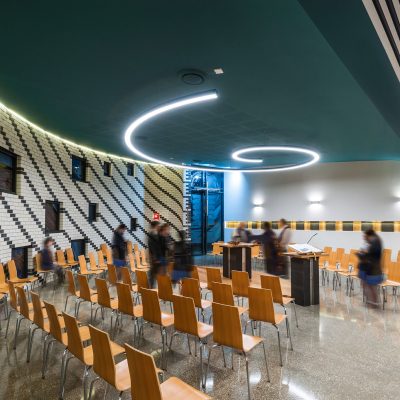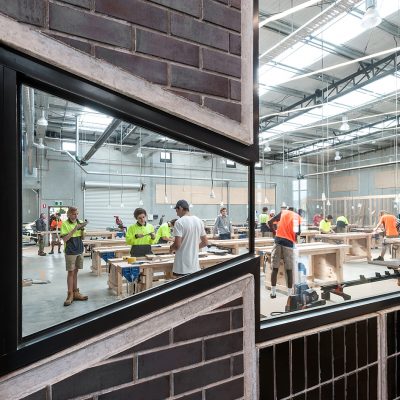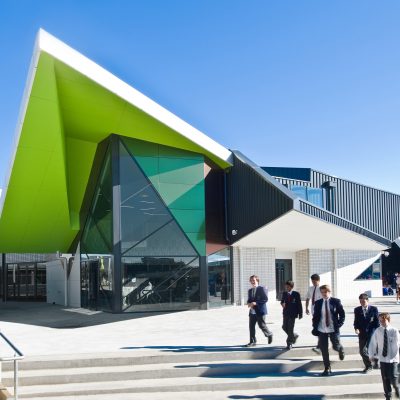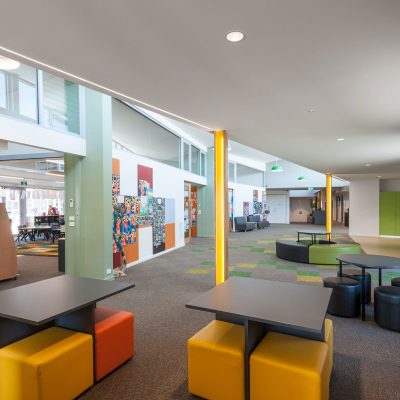From a design competition, the Mount Sinai College modernisation project was developed as a balance between creating a legacy of Jewish cultural values and the educational transformation of existing learning spaces. The architectural design emerged from a highly consultative and collaborative process, that successfully articulated the vision of this unique hands-on College community.
The emerging pedagogical approach at Mount Sinai College is focused on the ‘diversity’ of individual student needs; through a curriculum enabling ‘curiosity’; and the encouragement of ‘creativity’. The design strategy and architecture supports this vision by creating a connected, inclusive and stimulating environment that inspires the students on their learning journey.
The design targeted a simplification and clarity of people movement across three levels and through a variety of activity zones. A new inserted vertical core connects the College buildings, creating an opportunity for the student population to engage and experience the whole College. This part of the building celebrates the cultural aspects through display, materiality and light.
The blurring of the edges and connectivity between indoor and outdoor spaces at ground level and through elevated roof gardens provides the College with a unique holistic approach to learning, culminating in the symbolic ‘tree of life’ sculpture located at the ‘heart’ of the College. Everything was designed to welcome and to bring the Mount Sinai community together. This is architecture that says “come in and meet the family”.
The works are scoped across a five stage masterplan enabling the strategic delivery of smaller project packages, whilst maintaining a ‘live’ and safe site. Stage 4 completes in early 2020.
This project has greater meaning than simply an educational outcome. The design team also undertook a learning journey, particularly in understanding the synergy between education and culture. As research, the architectural team spent time at the Sydney Jewish Museum with historians understanding and appreciating the values of the community, and how these could form part of the building infrastructure. Key design drivers emerged around the importance of specific ‘historical’ reference to reinforce the learning journey. ‘Symbolism’ was important, but did not need to be overly explicit. And cultural ‘values’ were captured by careful placement of spaces to create the social ‘heart’ of this unique learning community.
Winner
2019 Learning Environments Australasia, NSW Chapter Awards
Category: Renovation / Modernisation Over $5 Million
